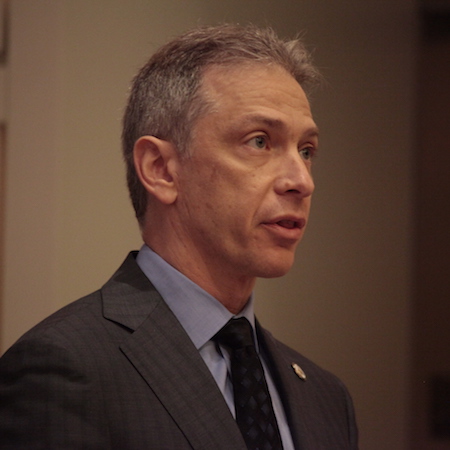 The Federal Register Notice signed by Director Iancu on April 18, 2018, which relates to the Federal Circuit’s recent decision in Berkheimer v. HP Inc., 881 F.3d 1360 (Fed. Cir. 2018), officially published on Friday, April 20, 2018. It is good news for patent owners with computer-implemented inventions and promises to bring a much more structured prosecution pathway.
The Federal Register Notice signed by Director Iancu on April 18, 2018, which relates to the Federal Circuit’s recent decision in Berkheimer v. HP Inc., 881 F.3d 1360 (Fed. Cir. 2018), officially published on Friday, April 20, 2018. It is good news for patent owners with computer-implemented inventions and promises to bring a much more structured prosecution pathway.
“The USPTO has issued today a Federal Register notice and memorandum to the patent examining corps in response to a recent decision by the U.S. Court of Appeals for the Federal Circuit in Berkheimer v. HP Inc., 881 F.3d 1360 (Fed. Cir. 2018), pertaining to subject matter eligibility,” explained Paul Fucito, a spokesman for the United States Patent and Trademark Office in the Office of Communications. “This new guidance pertains to the second step of the Alice-Mayo framework for determining subject matter eligibility, and is focused on how examiners are to analyze and document a conclusion that a claim element is ‘well-understood, routine, conventional’ during the patent examination process.”
Berkheimer is obviously an important and helpful decision from the patentee’s perspective. The Federal Register Notice appears to also be quite helpful as well.
“[A]n examiner should conclude that an element (or combination of elements) represents well-understood, routine, conventional activity only when the examiner can readily conclude that the element(s) is widely prevalent or in common use in the relevant industry,” the Notice reads. “A finding that an element is well-understood, routine, or conventional cannot be based only on the fact that the specification is silent with respect to describing such element.”
The Notice is significant because, in a 101 rejection, an examiner cannot simply assume that elements or a combination of elements are “well understood, routine or conventional.” Examiners will be required to either cite to an admission by the applicant in the specification, or something said during prosecution, court cases holding elements conventional, or a written publication establishing that the element or elements are well understood, routine or conventional. The Notice explains that “official notice” is to be used very sparingly.
“The USPTO is requesting public comment on the new guidance,” Fucito explained. “The USPTO is determined to continue its mission to provide clear and predictable patent rights in accordance with this rapidly evolving area of the law, and to that end, may issue further guidance in the future.”
The deadline for receiving public comments will be 120 days from official publication in the Federal Register, which will take place on Friday, April 20, 2018.
Tags: patent, Patent eligibility, patents, section 101




You share in the PLI Practice Center community, so we just ask that you keep things civil. Leave out the personal attacks. Do not use profanity, ethnic or racial slurs, or take shots at anyone's sexual orientation or religion. If you can't be nice, we reserve the right to remove your material and ban users who violate our Terms of Service.